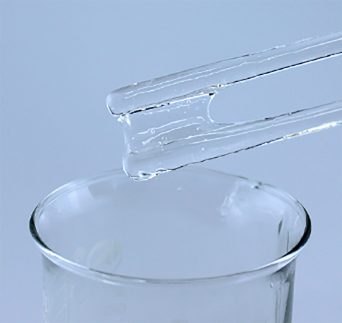
Dec . 21, 2024 16:31 Back to list
HPMC Water Solubility Characteristics and Its Implications in Formulations
The Solubility of Hydroxypropyl Methylcellulose (HPMC) in Water
Hydroxypropyl methylcellulose (HPMC) is a non-ionic, cellulose-based polymer that finds extensive applications across various industries, including pharmaceuticals, food, and cosmetics. One of the key characteristics of HPMC is its solubility in water, which is a fundamental property that influences its functionality in diverse formulations. With a focus on the solubility of HPMC in water, this article discusses its significance, mechanisms, and applications.
Understanding HPMC and Its Solubility
HPMC is a modified cellulose derivative that is produced by the reaction of cellulose with propylene oxide and methyl chloride. Its unique structure incorporates both hydroxypropyl and methoxy groups, which enhance its solubility in water compared to unmodified cellulose. The solubility of HPMC in water is influenced by several factors, including the degree of substitution (DS) of the hydroxypropyl and methoxy groups, temperature, and pH levels.
Generally, HPMC exhibits a high degree of solubility in cold water, forming a clear and viscous solution. This property makes it useful in various applications where it acts as a thickening agent, emulsifier, or binder. The solubility can range significantly depending on the specific grade of HPMC, which is often categorized based on its viscosity and substitution level.
Mechanisms of Solubility
The solubility of HPMC in water can be attributed to its molecular structure and interactions with water molecules. The presence of hydroxypropyl and methoxy groups creates hydrogen bonds with water, facilitating the dissolution process. When HPMC is introduced to water, the polymer chains swell and disentangle, leading to the formation of a homogeneous solution.
Temperature plays a crucial role in this process, as higher temperatures can increase the kinetic energy of water molecules, enhancing their interaction with HPMC. Furthermore, the pH of the solution can impact the ionization of the functional groups within the HPMC structure, affecting the overall solubility.
hpmc solubility in water

Applications
The solubility of HPMC in water underpins its versatility across numerous industries
1. Pharmaceuticals HPMC is widely used in drug formulations, particularly in sustained-release medications, where its gel-forming capability helps control the release rate of active pharmaceutical ingredients. Its solubility allows for the easy preparation of solutions and suspensions.
2. Food Industry In the food sector, HPMC is utilized as a food additive, serving as a thickening agent, stabilizer, and emulsifier. Its ability to form stable emulsions makes HPMC valuable in dressings, sauces, and dairy products.
3. Cosmetics HPMC is often incorporated into cosmetic formulations for its binding and thickening properties. It helps create stable gels and creams while enhancing the feel and texture of the products.
4. Construction In construction materials, HPMC is used as an additive in cement and mortar formulations to improve workability and water retention.
Conclusion
The solubility of HPMC in water is a fundamental property that significantly influences its utility across various applications. Understanding the mechanisms that contribute to its solubility, including the impact of molecular structure, temperature, and pH, is essential for optimizing its use in different formulations. Whether in pharmaceuticals, food, cosmetics, or construction, HPMC continues to be a vital ingredient due to its versatile properties, making it an indispensable component in modern formulations. As research advances, further exploration of HPMC's solubility characteristics may lead to innovative applications and improved formulation strategies, enhancing its role in various industries.
-
Versatile Hpmc Uses in Different Industries
NewsJun.19,2025
-
Redispersible Powder's Role in Enhancing Durability of Construction Products
NewsJun.19,2025
-
Hydroxyethyl Cellulose Applications Driving Green Industrial Processes
NewsJun.19,2025
-
Exploring Different Redispersible Polymer Powder
NewsJun.19,2025
-
Choosing the Right Mortar Bonding Agent
NewsJun.19,2025
-
Applications and Significance of China Hpmc in Modern Industries
NewsJun.19,2025







